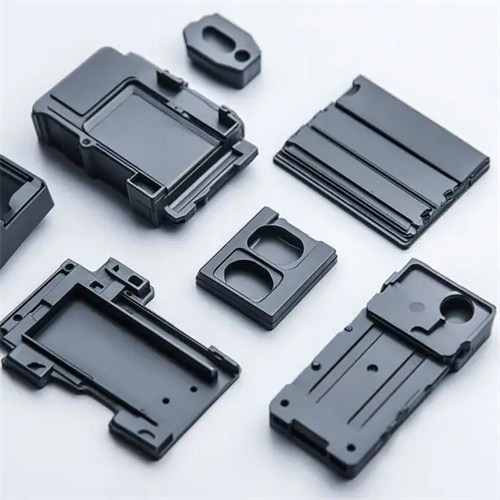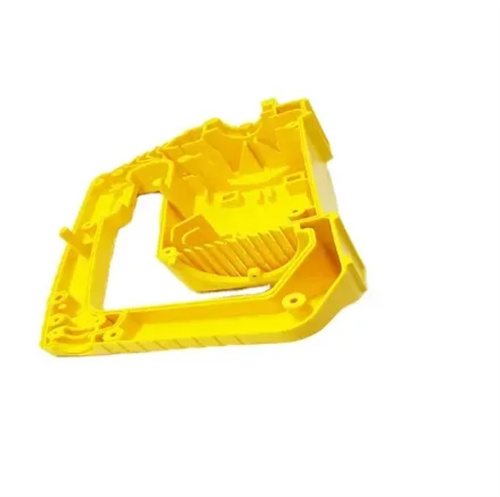Plastic molding shrinkage
The molding shrinkage of a plastic refers to the difference between the dimensions of a plastic part and the corresponding dimensions of the mold cavity, expressed as a percentage of the mold cavity dimensions, after the part has been removed from the mold and cooled to a stable state at room temperature. This characteristic is inherent to the plastic material itself and is a key factor to consider during the injection molding process. Different types of plastics exhibit significant variations in molding shrinkage. Even for the same type of plastic, shrinkage can vary due to factors such as molding process parameters and part structure. Accurately understanding the molding shrinkage of plastics is crucial for mold design, controlling part dimensional accuracy, and ensuring product assembly performance.

Plastic molding shrinkage is primarily related to the physical properties of the plastic and the temperature changes during the molding process. During injection molding, the plastic melt fills the mold cavity under high temperature and pressure, resulting in a large melt volume. As the plastic part cools, the distance between the molecular chains shortens due to the lowering temperature, causing the part to shrink in volume. Furthermore, plastic has good fluidity in its molten state, resulting in a relatively chaotic arrangement of molecular chains. During the cooling and solidification process, the molecular chains gradually crystallize or orient themselves, forming an orderly arrangement, a process that also causes the part to shrink in volume. For crystalline plastics, such as polyethylene and polypropylene, the crystallization process results in significant volume changes, so the molding shrinkage of crystalline plastics is generally greater than that of amorphous plastics.

Numerous factors influence plastic molding shrinkage, starting with the type and grade of plastic. Different plastics exhibit significant shrinkage variations due to their varying molecular structures and crystallization properties. For example, polyethylene’s shrinkage typically ranges from 1.5% to 3.5%, while polystyrene’s is smaller, typically between 0.4% and 0.7%. Even for the same plastic, different grades can exhibit varying shrinkage due to differences in molecular weight, additive content, and other factors. Secondly, molding process parameters significantly influence shrinkage. Increasing injection pressure improves melt compaction in the mold cavity, increasing the density of the part and consequently reducing shrinkage. Increasing injection temperature increases melt fluidity and prolonged cooling time, further increasing shrinkage. Increasing holding pressure and time can reduce part volumetric shrinkage and lower shrinkage.

The structural design of plastic parts is also a significant factor influencing molding shrinkage. The wall thickness of a plastic part significantly affects shrinkage. Thick-walled areas cool more slowly, allowing for more complete molecular crystallization or orientation, resulting in greater shrinkage. Thin-walled areas cool faster, leading to relatively less shrinkage. The complexity of the part’s shape also affects shrinkage. Complex parts are subject to greater mold constraints during cooling, limiting their shrinkage and resulting in lower shrinkage. Simple parts, on the other hand, experience more freedom to shrink and experience higher shrinkage. Furthermore, structures such as ribs and bosses on a part can alter the flow and cooling of the melt, leading to differences in shrinkage between certain areas and those elsewhere.

In actual production, accurately controlling the molding shrinkage of plastics is crucial for ensuring the dimensional accuracy of plastic parts. Mold designers determine the mold cavity size based on the plastic’s molding shrinkage. Typically, the mold cavity size is equal to the nominal dimensions of the plastic part plus the product of the part’s dimensions and shrinkage. During the injection molding process, operators control shrinkage by adjusting molding process parameters. For example, based on the part’s structural characteristics and material properties, they appropriately set parameters such as injection pressure, injection temperature, holding pressure, and holding time to keep the part’s shrinkage within an acceptable range. For parts requiring higher precision, process parameters can be optimized through multiple mold trials and adjustments to minimize shrinkage fluctuations and ensure dimensional stability. Furthermore, during the product design phase, the shrinkage characteristics of the plastic should be fully considered, and the part’s structure should be rationally designed to avoid uneven shrinkage due to improper structure, which can affect product quality.
